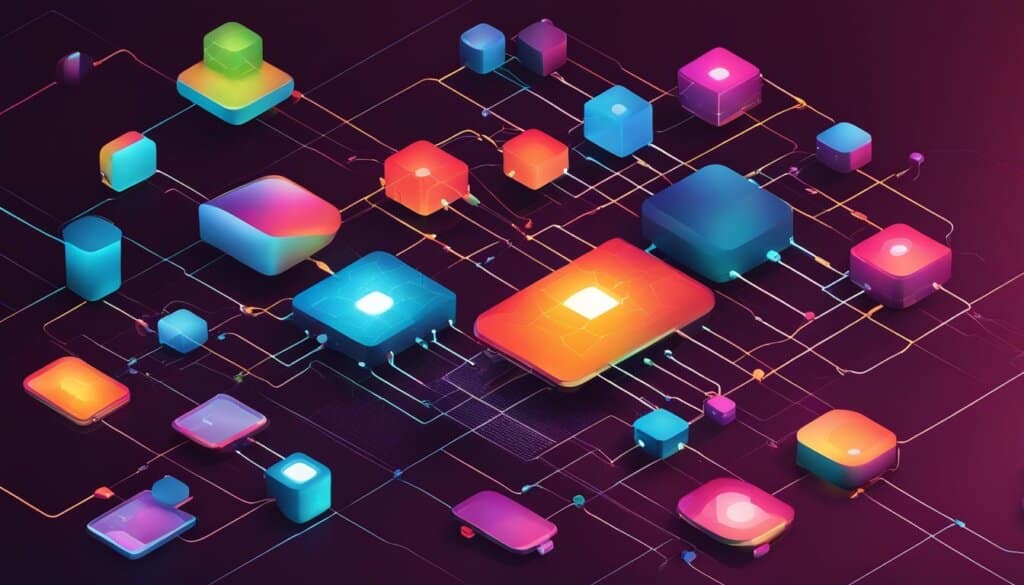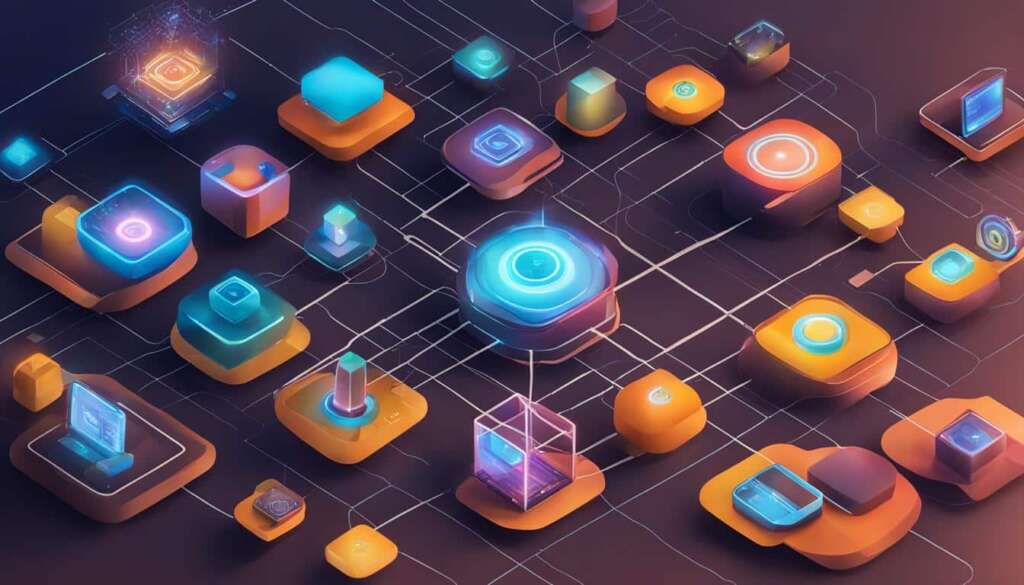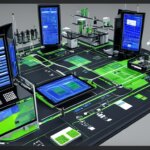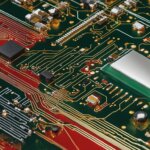Table of Contents
Welcome to our article on IoT devices, where we will provide an in-depth explanation of what they are and how they work. IoT devices, short for Internet of Things devices, have revolutionized the way we interact with technology. These nonstandard computing hardware devices connect wirelessly to a network and transmit valuable data, extending internet connectivity beyond traditional computing devices.
IoT devices come in various forms, including sensors, actuators, and appliances, and they are used in both industrial and consumer applications. This technology allows for remote monitoring and control, making daily activities faster, easier, and more convenient.
To help you gain a better understanding of IoT devices, we will cover a range of topics, including examples of devices, how they work, their connectivity and networking capabilities, potential security risks, and the importance and benefits of incorporating IoT into our lives and businesses.
In the following sections, we will explore each of these topics in detail, using simple language and real-world examples to enhance your comprehension. So, let’s dive in and explore the exciting world of IoT devices.
Examples of IoT Devices
IoT devices come in various forms, serving different purposes in different settings. Let’s explore some examples of IoT devices across consumer, enterprise, and industrial categories.
Consumer IoT Devices
Consumer IoT devices are designed to enhance everyday life and provide convenience. They include:
- Smart TVs: These devices connect to the internet, allowing users to stream content and access various online services.
- Smart speakers: Examples of popular smart speakers include Google Home and Amazon Echo. They use voice recognition technology to perform tasks like playing music or answering questions.
- Wearables: Devices like smartwatches and fitness trackers are wearable IoT devices that monitor health metrics, track fitness activities, and provide notifications.
- Smart appliances: IoT-enabled appliances like refrigerators, washing machines, and thermostats can be controlled and monitored remotely through smartphone apps, offering convenience and energy efficiency.
Enterprise IoT Devices
Enterprises rely on IoT devices to optimize operations and improve efficiency. The following are examples of enterprise IoT devices:
- Smart locks: These devices offer enhanced security by allowing remote access control and monitoring of entry points.
- Smart thermostats: IoT thermostats enable businesses to remotely manage temperature settings, reducing energy waste and optimizing comfort.
- Smart lighting: IoT lighting systems automatically adjust brightness based on occupancy or natural light, enhancing energy efficiency.
- Security systems: IoT-enabled security systems monitor premises and provide real-time alerts for potential breaches or threats.
Industrial IoT Devices
In industrial settings, IoT devices play a crucial role in monitoring and optimizing processes. Some examples of industrial IoT devices include:
- Industrial sensors: These devices collect data on various parameters such as temperature, pressure, and humidity, enabling real-time monitoring and predictive analysis.
- Assembly line monitors: IoT devices integrated into assembly lines detect anomalies, track production progress, and predict maintenance needs to prevent unexpected downtime.
- Inventory management systems: IoT devices automate inventory tracking and supply chain management, ensuring efficient stock management and reducing manual errors.
These are just a few examples of the broad range of IoT devices available in different sectors. From smart homes to industrial environments, IoT devices continue to transform the way we live and work.
| Category | Examples of IoT Devices |
|---|---|
| Consumer | Smart TVs, smart speakers, wearables, smart appliances |
| Enterprise | Smart locks, smart thermostats, smart lighting, security systems |
| Industrial | Industrial sensors, assembly line monitors, inventory management systems |
How IoT Devices Work
IoT devices play a crucial role in connecting the physical world to the digital realm. They are equipped with sensors, processors, and communication hardware that enable them to collect and transmit data. The functionality of IoT devices is made possible through the following key components:
Sensors: IoT devices are equipped with various sensors that allow them to gather data from the surrounding environment. These sensors can include temperature sensors, humidity sensors, motion sensors, and more. Sensors enable IoT devices to detect and measure changes in physical conditions.
Processors: IoT devices have onboard processors that can analyze the data collected by the sensors. These processors can perform calculations and execute algorithms to extract meaningful insights from the raw data. This enables IoT devices to make intelligent decisions and trigger appropriate actions.
Communication Hardware: IoT devices are designed to connect to a network, such as the internet or a local network. They utilize communication hardware, such as Wi-Fi modules or cellular chips, to transmit the collected data to other devices or cloud-based platforms for further processing and analysis.
When it comes to the management of IoT devices, there are various aspects to consider:
- Device Registration: IoT devices need to be registered within a network or system, which involves assigning unique identifiers and authenticating their identity.
- Authentication: To ensure the security of the IoT ecosystem, devices need to authenticate themselves before accessing or sharing data. This authentication process helps prevent unauthorized access and data breaches.
- Configuration: IoT devices can be configured to perform specific tasks or adapt to different environments. Configuration may include setting up network parameters, adjusting sensor sensitivity, or defining operational thresholds.
- Monitoring: Continuous monitoring of IoT devices is essential to ensure their proper functioning and identify any potential issues or anomalies. Monitoring allows for proactive maintenance, early detection of malfunctions, and optimization of device performance.
- Troubleshooting: When problems arise, IoT devices need to be efficiently troubleshooted to identify and resolve any issues. This can involve diagnosing hardware or software errors, updating firmware, or addressing connectivity issues.
- Firmware Updates: IoT device firmware may need periodic updates to enhance functionality, fix bugs, or address security vulnerabilities. Regularly updating firmware is crucial to ensure devices remain secure and up-to-date.
IoT Device Connectivity and Networking
IoT devices rely on various connectivity and communication protocols to facilitate seamless data transfer and networking. Depending on the specific application, IoT devices utilize a range of protocols that enable efficient connectivity and ensure reliable data transmission. Furthermore, wireless protocols are frequently employed to establish connections between IoT devices and the network. This section explores the different IoT protocols and wireless technologies commonly utilized in IoT device connectivity.
IoT Protocols
IoT protocols serve as the foundation for efficient data exchange between IoT devices and the network infrastructure. These protocols define the rules and standards that govern the communication process, ensuring seamless connectivity and interoperability. Here are some of the commonly used IoT protocols:
- Constrained Application Protocol (CoAP): Designed for resource-constrained environments, CoAP allows for lightweight communication between IoT devices and servers. It is commonly used in applications where power consumption and bandwidth are limited.
- Datagram Transport Layer Security (DTLS): DTLS adds an additional layer of security to the transport layer of the communication protocol stack. It ensures secure communication between IoT devices and provides protection from external threats.
- MQTT (MQ Telemetry Transport): MQTT is a lightweight messaging protocol that enables efficient and reliable communication between IoT devices and network servers. It is widely adopted in IoT applications due to its low bandwidth requirements and support for publish-subscribe messaging.
- Data Distribution Service (DDS): DDS is a middleware protocol that facilitates real-time data exchange between IoT devices and enables high-performance, scalable, and reliable communication. It is commonly used in industrial IoT applications.
- Advanced Message Queuing Protocol (AMQP): AMQP is a messaging protocol that allows IoT devices to exchange information in a reliable, secure, and interoperable manner. It supports various communication patterns and is commonly used in enterprise IoT applications.
Wireless Protocols
Wireless protocols play a crucial role in enabling IoT device connectivity. They provide the means for IoT devices to wirelessly connect to the network infrastructure and facilitate seamless data transmission. Here are some of the wireless protocols commonly used in IoT:
- Cellular: Cellular connectivity, such as 4G LTE and 5G, allows IoT devices to connect to the internet via cellular networks, providing wide coverage and high data transfer rates.
- Satellite: Satellite connectivity enables IoT devices to connect to the network infrastructure even in remote areas without a strong terrestrial network signal. It is particularly useful in industries such as agriculture, maritime, and transportation.
- Wi-Fi: Wi-Fi technology enables IoT devices to connect to local area networks (LANs) and the internet. It offers high-speed connectivity within a limited range and is commonly used in smart homes and offices.
- Ethernet: Ethernet provides a wired connectivity option for IoT devices, offering reliable and high-speed data transmission over local area networks (LANs). It is widely used in industrial and enterprise IoT applications.
When selecting the appropriate connectivity options for IoT devices, several factors need to be considered, including power consumption, range, bandwidth requirements, and the specific application’s needs. Additionally, IoT devices often connect to an IoT gateway or edge device for data analysis and processing before transmitting it to the cloud or other network servers.

Security Risks of IoT Devices
The interconnection of IoT devices presents significant security and privacy concerns. It exposes these devices to various risks and vulnerabilities that can compromise the integrity and confidentiality of data. Understanding and addressing these risks is crucial to safeguarding IoT ecosystems.
Increased Attack Surfaces
One of the key IoT security risks is the expanded attack surface it creates. With the proliferation of interconnected devices, there are more potential entry points for cybercriminals to exploit. Weak links, such as unsecured or outdated devices, can become gateways for attackers to gain unauthorized access.
Unsecured Hardware
IoT devices often lack stringent security measures due to cost or complexity concerns. This leaves them vulnerable to various attacks, including physical tampering and unauthorized firmware modifications. Without robust security measures in place, IoT devices can be compromised, leading to severe consequences.
Unencrypted Data Transmissions
Another significant risk is the transmission of unencrypted data over networks. This exposes sensitive information to interception and manipulation by attackers. Without proper encryption protocols in place, IoT devices become potential sources of data breaches and privacy violations.
Malicious Injections and Firmware Exploits
Cybercriminals can inject malicious code or exploit vulnerabilities in IoT device firmware to gain control or disrupt their operations. This allows them to compromise the functionality of the device or use it as a foothold for launching further attacks. Firmware exploits can be challenging to detect and mitigate, making them a significant security concern.
IoT Ransomware Attacks
Similar to traditional ransomware attacks, IoT devices can also be targeted by ransomware. Malicious actors can encrypt or lock IoT devices, demanding a ransom for the restoration of functionality. IoT ransomware attacks can have severe consequences, especially if critical infrastructure or life-saving devices are compromised.
Addressing IoT Security Risks
Mitigating the security risks associated with IoT devices requires a multi-layered approach. Here are some recommended practices:
- Implement strong authentication mechanisms to prevent unauthorized access.
- Utilize encryption protocols to secure data transmissions.
- Segment networks to limit the impact of a potential breach.
- Regularly update and patch IoT device firmware to address vulnerabilities.
- Enforce a robust password policy to prevent weak credentials.
By following these security measures, organizations and individuals can reduce the likelihood of IoT security incidents and protect their data and privacy. Government agencies, such as the FBI, also provide alerts and recommendations to address IoT security vulnerabilities.
The Importance and Benefits of IoT
IoT, or the Internet of Things, is considered one of the most crucial technologies of the 21st century. It facilitates seamless communication among people, processes, and things, leading to remarkable advancements in various industries. The importance of IoT cannot be overstated, as it has revolutionized business operations and transformed healthcare services.
One of the key benefits of IoT is its ability to improve operational efficiency within organizations. By connecting devices and collecting real-time data, IoT enables smart decision-making, optimization of production processes, and effective equipment maintenance in industries like manufacturing. This not only streamlines operations but also reduces costs and enhances productivity.
Enhancing customer experiences is another significant advantage of IoT. With IoT-enabled devices, businesses can provide personalized and tailored experiences to their customers. For instance, retail stores can use IoT technology to analyze customer behavior, preferences, and buying patterns, allowing them to offer personalized recommendations and targeted promotions. Similarly, IoT applications in the automotive industry can enhance the driver experience by providing real-time information, entertainment, and navigation assistance.
IoT also opens up new opportunities for businesses by creating innovative business models and revenue streams. For example, companies can leverage IoT data to develop subscription-based services, predictive maintenance solutions, and remote monitoring systems. These new revenue streams not only generate additional income but also foster customer loyalty and differentiation in the market.
Moreover, IoT enables organizations to make better data-driven decisions. By capturing a vast amount of data from interconnected devices, IoT systems can provide valuable insights and analytics. These insights help organizations understand consumer behavior, optimize processes, and identify new opportunities. Data-driven decision-making empowers businesses to stay competitive and agile in today’s rapidly evolving market.
IoT in Business
The impact of IoT extends across various sectors, including manufacturing, transportation, retail, and the public sector. In the manufacturing industry, IoT enables the implementation of smart factories that incorporate automation, predictive maintenance, and real-time monitoring. This results in increased efficiency, reduced downtime, and cost savings.
In the healthcare sector, IoT plays a crucial role in improving patient monitoring and ensuring timely and accurate healthcare services. IoT devices allow healthcare professionals to remotely monitor patients’ vital signs and receive instant alerts in case of abnormal readings. This capability is particularly valuable for patients with chronic diseases who require continuous monitoring and care.
IoT in Healthcare
IoT also enables the provision of remote healthcare services, ensuring access to medical expertise and care regardless of location. Virtual consultations, remote diagnostics, and telemedicine are just a few examples of how IoT is transforming healthcare delivery. This not only improves healthcare outcomes but also increases convenience and reduces healthcare costs.
The potential of IoT continues to grow as businesses and industries recognize its value. With its ability to enhance operational efficiency, improve customer experiences, create new business models, and enable better data-driven decisions, IoT is a game-changer in the digital age.
Pros and Cons of IoT
The Internet of Things (IoT) offers numerous advantages, revolutionizing the way we live and work. One key advantage is the access to information from anywhere, allowing users to remotely monitor and control IoT devices. This enables convenience and productivity, as users can manage their devices and access real-time data even when they are not physically present.
Improved communication between devices is another benefit of IoT. With interconnected devices, seamless data transfer and communication become possible, enabling efficient coordination and automation of tasks. This enhances operational efficiency, reduces manual effort, and improves decision-making processes.
Data analysis and insights are essential in today’s world, and IoT facilitates this by providing a vast amount of data from various devices. Through advanced analytics and machine learning algorithms, businesses and individuals can gain valuable insights, make informed decisions, and identify opportunities for optimization.
While there are notable advantages, it is crucial to also consider the challenges of IoT. One significant concern is the security risks associated with interconnected devices. With more devices connected, the attack surface expands, making IoT vulnerable to cyber threats. This highlights the importance of implementing robust security measures to safeguard sensitive data and prevent unauthorized access.
Device management complexities can also pose challenges in an IoT ecosystem. As devices from different manufacturers may have varying compatibility standards, integration and interoperability become crucial concerns. Organizations must invest in compatible hardware and software solutions to ensure seamless connectivity and efficient device management.
Furthermore, the potential for system bugs and vulnerabilities is a disadvantage of IoT. As more devices become interconnected, the complexity of the ecosystem increases, leading to potential software and hardware vulnerabilities. Regular updates, thorough testing, and prompt bug fixes are critical to maintain system reliability and security.
Organizations and industry bodies have recognized these challenges and have established IoT standards and frameworks to address them. Additionally, investing in IoT security measures and robust infrastructure is vital to mitigate risks and protect against potential threats.
Despite the challenges, the advantages of IoT outweigh the potential drawbacks. With careful planning, implementation, and ongoing security measures, the potential benefits of IoT can be fully realized, transforming industries, enhancing user experiences, and driving innovation.
FAQ
What are IoT devices?
IoT devices, or internet of things devices, are nonstandard computing hardware that connect wirelessly to a network and can transmit data. They extend internet connectivity beyond traditional computing devices and can include sensors, actuators, and appliances.
What are some examples of IoT devices?
Examples of IoT devices include smart TVs, smart speakers like Google Home, wearables, and smart appliances. In a smart home, IoT devices can sense a person’s presence and automate various tasks, such as adjusting the thermostat or controlling lighting.
How do IoT devices work?
IoT devices work by interacting with the physical world and connecting to a network. They have sensors, processors, and communication hardware to collect and send data. Many IoT devices connect to a Dynamic Host Configuration Protocol server to acquire an IP address. IoT devices can be managed and controlled through software applications or integrated web servers.
What connectivity and networking protocols do IoT devices use?
IoT devices use various connectivity and communication protocols depending on the specific application. Some common protocols include Constrained Application Protocol (CoAP), Datagram Transport Layer Security (DTLS), MQTT (MQ Telemetry Transport), Data Distribution Service (DDS), and Advanced Message Queuing Protocol (AMQP). Wireless protocols like cellular, satellite, Wi-Fi, and Ethernet can also be used for connectivity.
What are the security risks of IoT devices?
Some of the top IoT security risks include increased attack surfaces, unsecured hardware, poor asset management, unencrypted data transmissions, malicious injections, firmware exploits, and IoT ransomware attacks. IoT devices have been involved in large-scale hacks and breaches, highlighting the need for stronger security measures.
What is the importance and benefits of IoT?
IoT is one of the most important technologies of the 21st century, enabling seamless communication between people, processes, and things. It has significant benefits for organizations, including improving operational efficiency, enhancing customer experiences, creating new business models and revenue streams, and making better data-driven decisions. IoT is applicable across industries such as manufacturing, automotive, transportation, retail, healthcare, and the public sector.
What are the pros and cons of IoT?
Some advantages of IoT include access to information from anywhere, improved communication between devices, data analysis and insights, automation of tasks, and continuous healthcare monitoring. However, there are also challenges and disadvantages to consider, such as increased security risks, device management complexities, compatibility issues between devices from different manufacturers, and the potential for system bugs and vulnerabilities.













